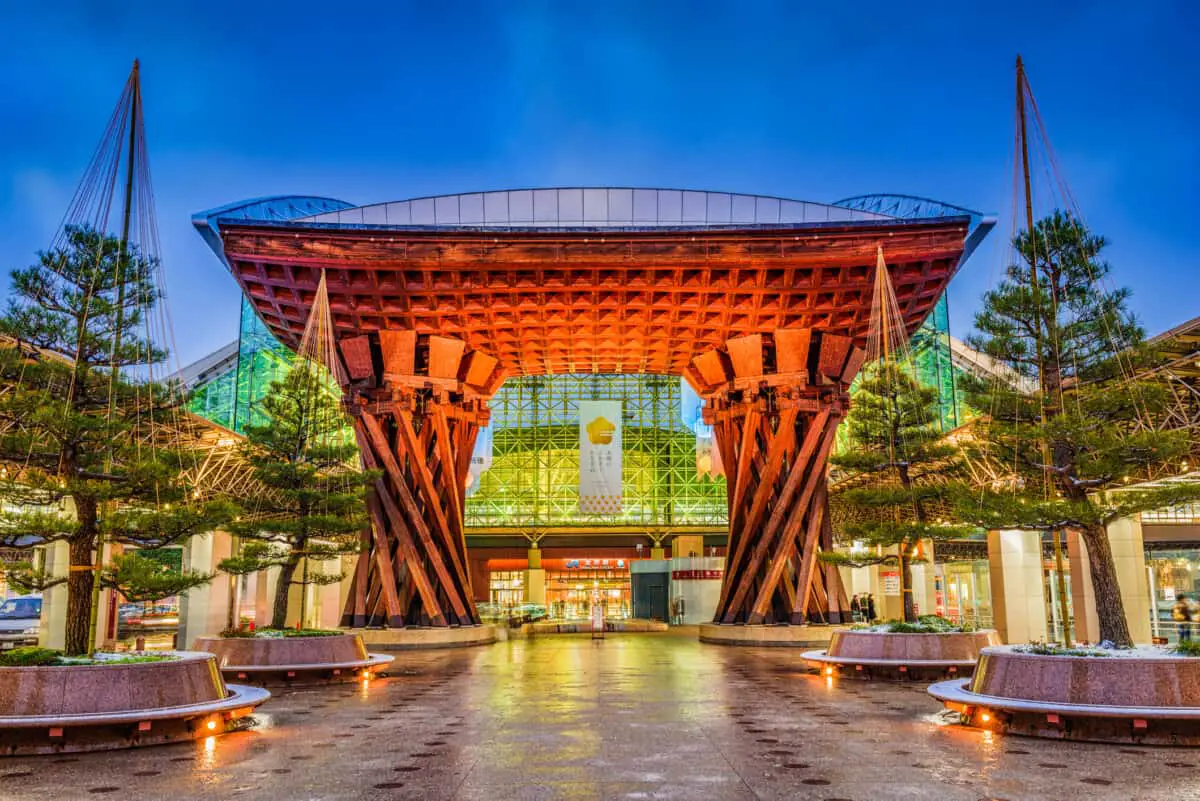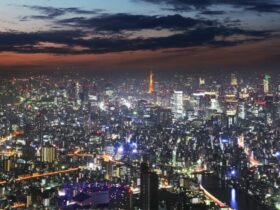Kanazawa lies in the Hokuriku region of Japan, in the northwestern Ishikawa Prefecture, and is bordered to the west by the Sea of Japan and to the east by Toyama Prefecture. Situated between the rivers Sai and Asano. Areas of the city are inside the Hakusan National Park’s boundaries.
Kanazawa Castle has a rich history of beautiful geishas, samurai lords, castles that have burned to the ground repeatedly, and breathtaking zen-style gardens.
In this article, we will explore them all, so keep reading to find out the top 10 attractions you should add to your itinerary while exploring Kanazawa City.
Kanazawa City Official Website
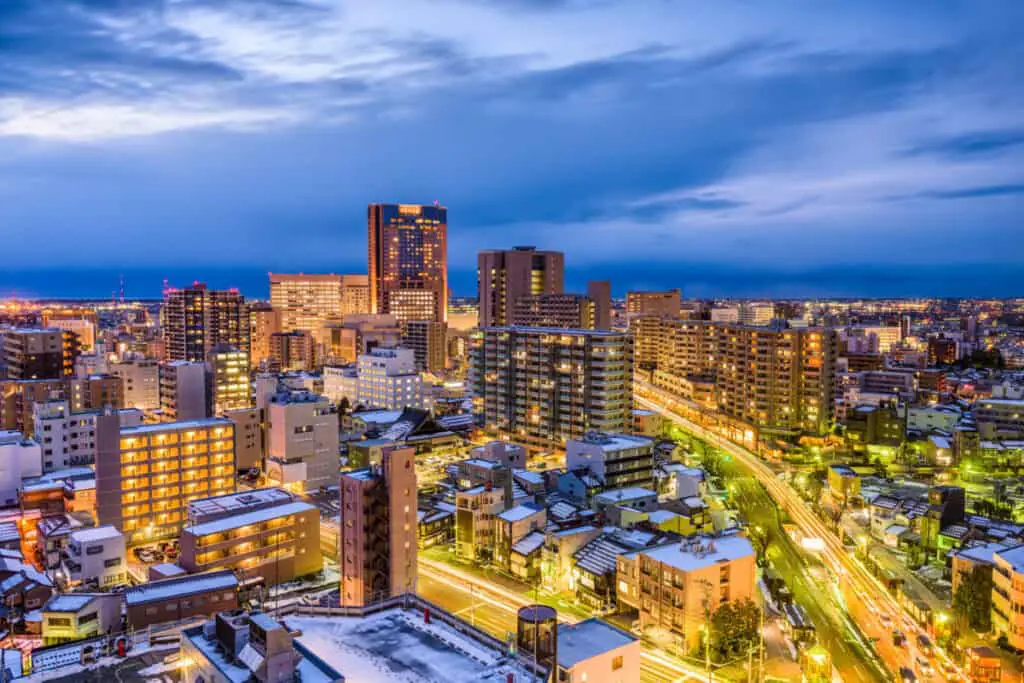
Kanazawa Castle has Risen From the Ashes Too Many Times to Count
Castle and home to the Lords of Kaga of the Maeda Clan, the second most powerful clan in Edo, now Tokyo, in 1583, the Kanazawa Castle is a staple of Japanese history.
Burning down quite a number of times between 1583 and 1881, Kanazawa Castle has been rebuilt many times.
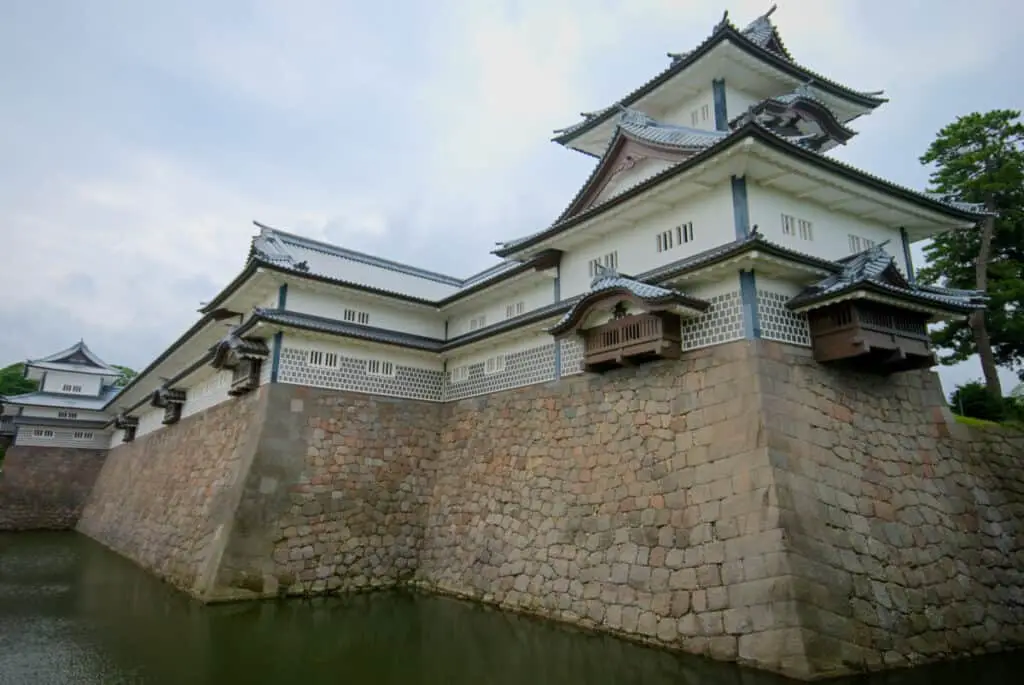
General admission to Kanazawa Castle is free and the admission time changes throughout the year. Summer admission hours are longer.
There are some attractions to see on the Kanazawa Castle grounds that do have paid admission.
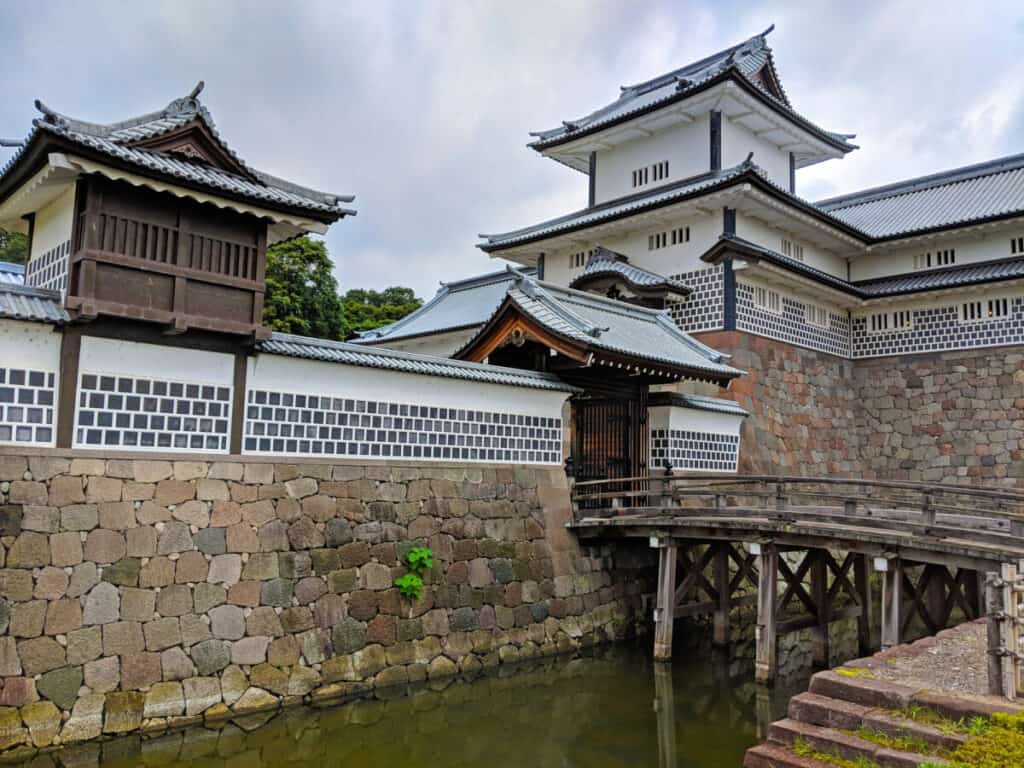
There are a few different ways to enter the castle grounds but tourists and residents alike prefer to enter by way of the Ishikawa-mon Gate, which is very near to the next point of interest you need to visit, the castle gardens.
Kanazawa Castle Park Official Website
Kenroku-En Garden is Among the Most Beautiful in Japan
Ranked as one of the most beautiful garden landscapes in Japan, Kenroku-En Garden rests around the outer area of the Kanazawa Castle grounds.
Kenroku-En Garden was constructed for 200 years by the Maeda clan family during their rule and people have been able to view it in person since 1871.
Kenroku-En Garden Official Website
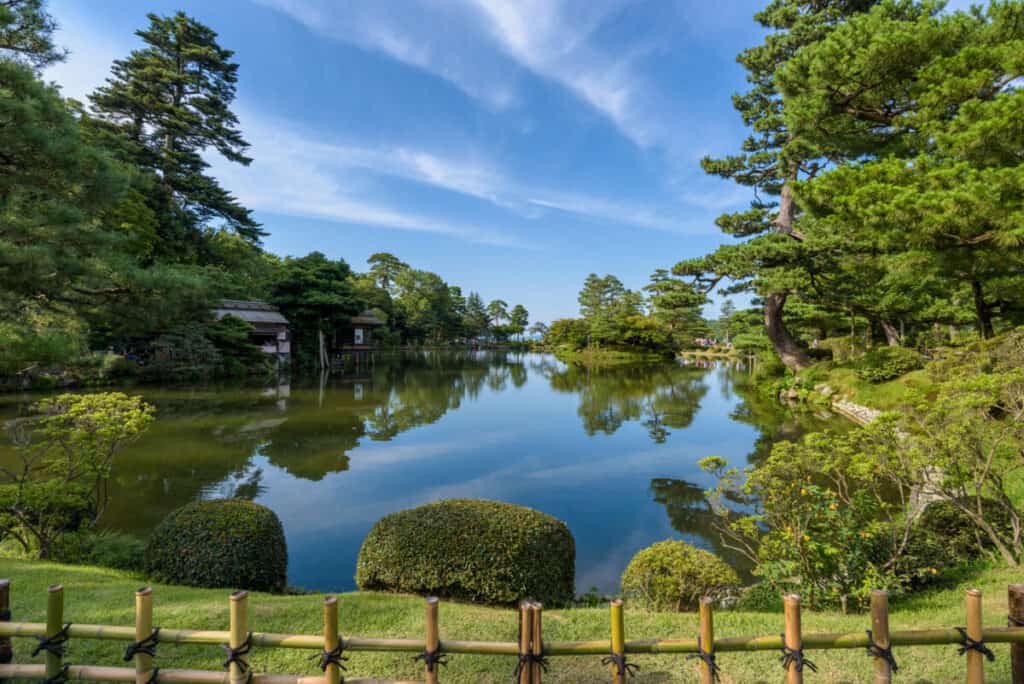
With a mixture of featured waterways, tea houses, stone structures, bridges, flowers, trees, amazing views, and more undiscovered areas to explore, there is no question why this is called a perfect garden.
There is a small fee to gain admission but it is well worth it because no matter the time of year, you will experience something new each season in this amazing garden.
Higashi Chaya District is a Cultural Asset in Japan
The Higashi Chaya District, also known as the East Geisha District, was an extremely popular area for lords and other wealthy nobility.
Geisha were very talented singers, dancers, and musicians who entertained wealthy guests and have since become extremely famous around the world.
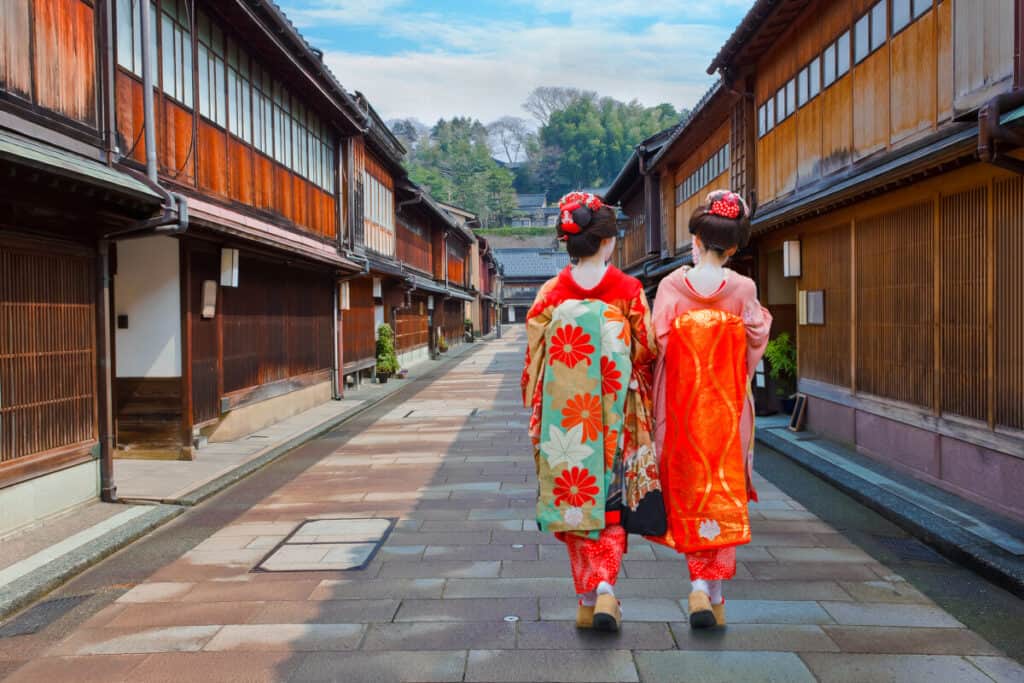
The Higashi Chaya District was filled with geisha houses and was the largest Geisha District in Kanazawa City. It was honored with being named a cultural asset to Japan.
If you visit Higashi Chaya District, you will be able to explore the inside of a two-story geisha house and eat in some of the old buildings they repurposed into restaurants.
Higashi Chaya District Official Website
Ninjadera is Not a Ninja House But It Was Built Like One
Ninjadera is actually called Myoryuji Temple. The Myoryuji Temple has been around since the Edo period when the Maeda clan family ruled the area.
It is not actually a real ninja house because it was not created by or for ninja. The Maeda clan family built it, taking inspiration from the ninja houses of the time.
Myoryuji Temple Official Website
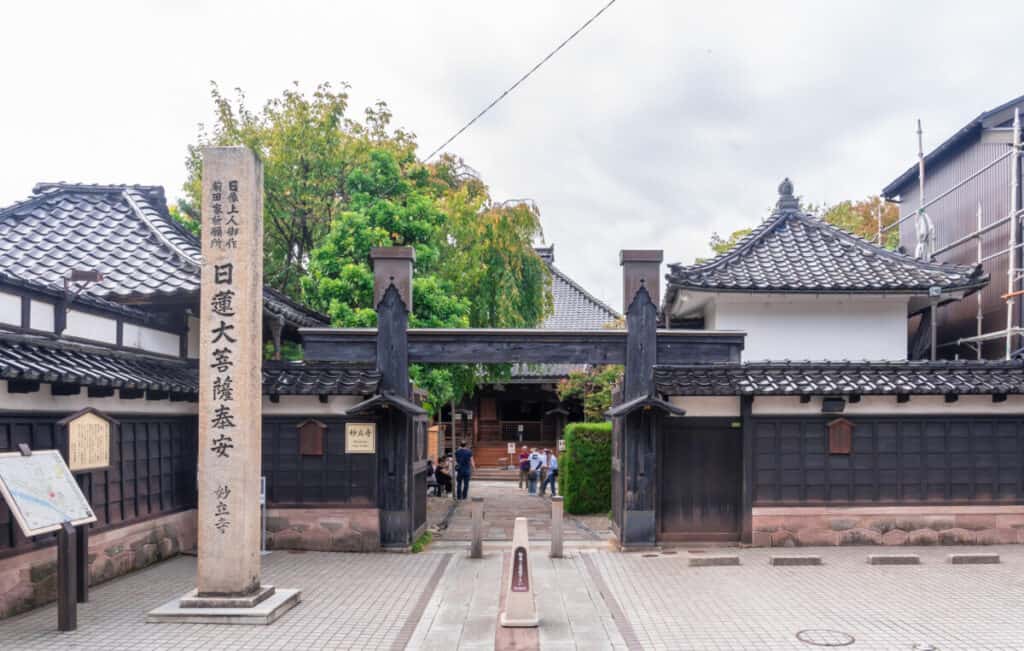
They built the Myoryuji Temple with trap doors, false walls, and other ninja house features, which gave Ninjadera its name.
Ninjadera, the Myoryuji Temple, is located in the Teramachi District, which is to the south of Kanazawa.
There is a fee to enter Ninjadera but you get to see and explore a traditional Japanese home from long ago.
21st Century Museum of Contemporary Art
The 21st Century Museum of Contemporary Art is just a short walk from the Kenroku-En Garden and is a world-renowned art museum.
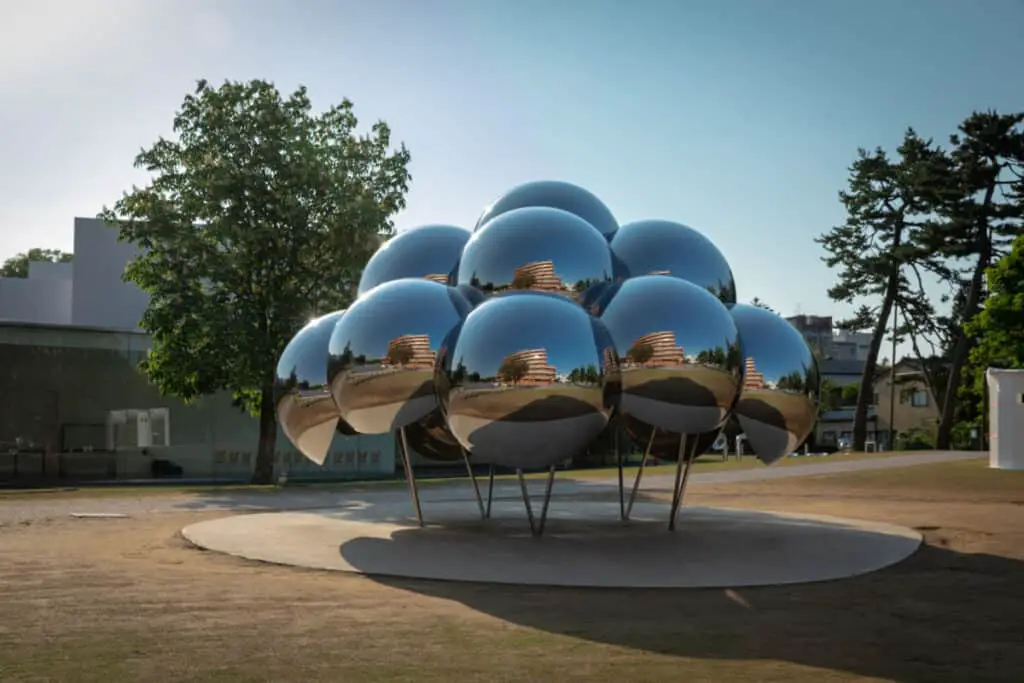
The museum features incredible pieces of contemporary art not only from Japan but from talented artists from all around the world.
The circular structure of the building is designed for guests to enter and exit at multiple locations of the building.
No matter when you go to the 21st Century Museum of Contemporary Art, you will most likely be greeted with a fresh exhibit that is usually on display at the museum.
Kanazawa 21st Century Museum Of Art Official Website
Nagamachi District Displays the Lifestyles of the Samurai
Nagamachi District, or rather the Nagamachi Samurai District, was home to many samurai and their families.
The Nagamachi Samurai District features an array of museums and preserved Samurai houses and even an old Edo period pharmacy that represents the rise of the merchant class.
Nagamachi District Official Website
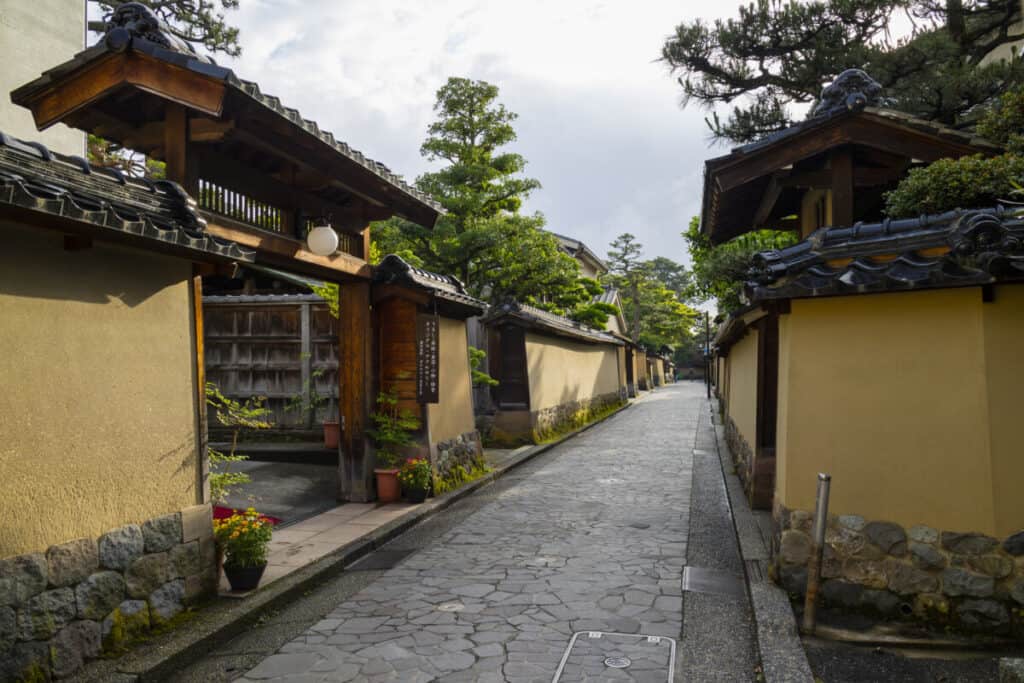
The district really showcases the historical significance of the time and displays the lifestyles of the Samurai lords.
For a small fee per attraction, you get to view firsthand how powerful families like the Maeda clan family and Nomura family lived.
Seisonkaku Villa
Seisonkaku Villa is one of the most extravagant and well-preserved samurai villas from the Edo period.
Created only a few years before the end of the period, Saisonkaku Villa was a gift from one of the last ruling lords of the Maeda clan family, to his wife.
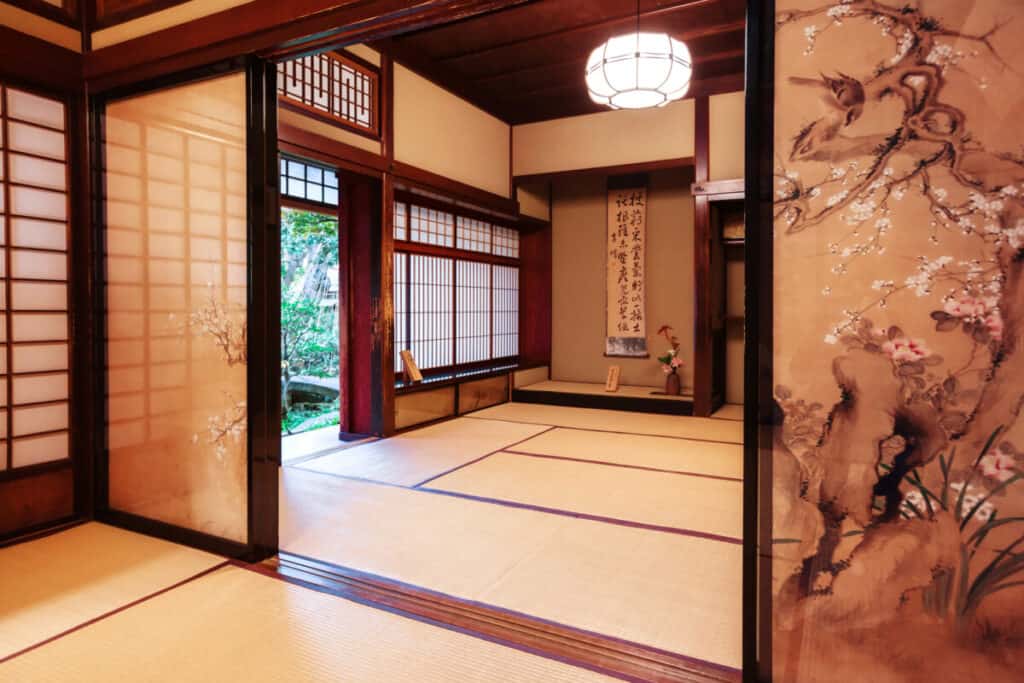
Seisonkaku Villa has two floors and is located directly beside Kenroku-En Garden. On the second floor, you can look out onto the garden and see the magnificent sights. Seisonkaku Villa even has its own private entrance to the Kenroku-En Garden.
Tourists can take this entrance while visiting but there is a separate fee for this adventure.
The informational signs you’ll find in Seisonkaku Villa are in English and in Japanese and it is easy to navigate your way around.
Seisonkaku Villa Official Website
D.T. Suzuki Museum
The D.T. Suzuki Museum commemorates the life, philosophical beliefs, and teaching of Daisetsu Teitaro Suzuki. He was a Buddhist philosopher who brought the idea and ways of Japanese Zen to the western world.
Suzuki was a writer and his teachings and writing are displayed in his museum. The museum’s structure and design are also a symbol of Suzuki’s simple and zen philosophy and give the tourists and guests an opportunity to reflect.
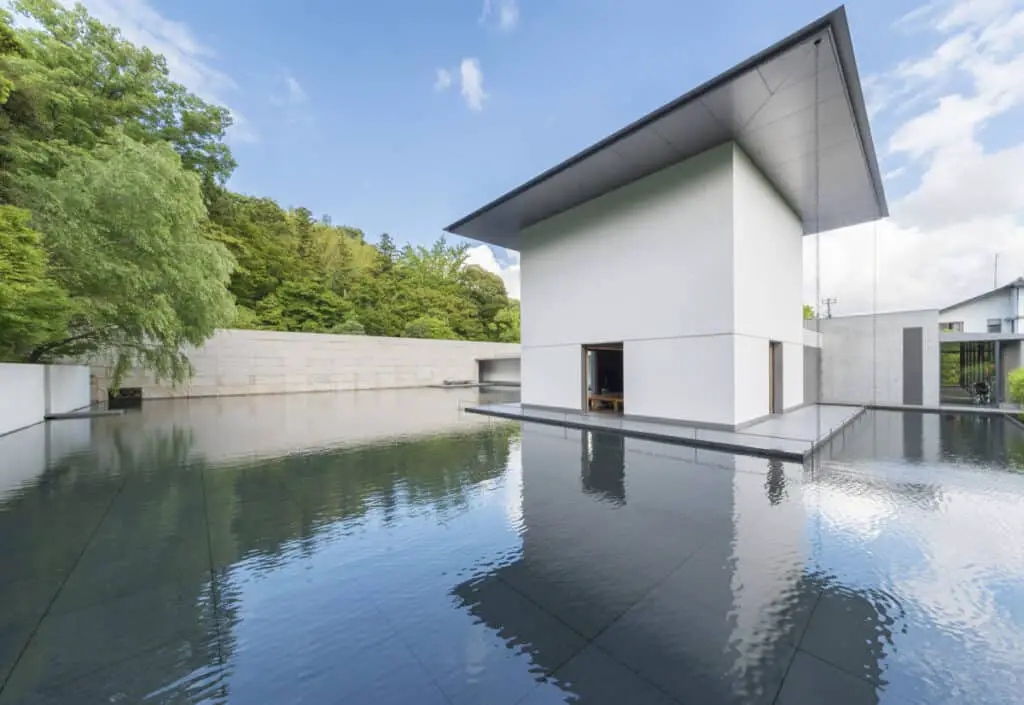
The D.T. Suzuki Museum is a small museum but it is made up of three different buildings the are connected together by walkways that allow you to walk around the Water Mirror Pond, which is another motif for the self-reflection that Suzuki represented.
D.T. Suzuki Museum Official Website
Tourists can also venture into the learning area of the museum where Suzuki’s books are available in English and in Japanese for you to examine. They even have iPads to work on while you relax with a view of the garden.
Omicho Market Restaurants are Famous for Their Seafood Geisha District Rice Bowls
One of Kanazawa’s oldest markets, Omicho Market is a fresh food market that dates all the way back to the Edo period. As busy as the market was back in its time, the Omicho Market is still bustling with residents and tourists alike.
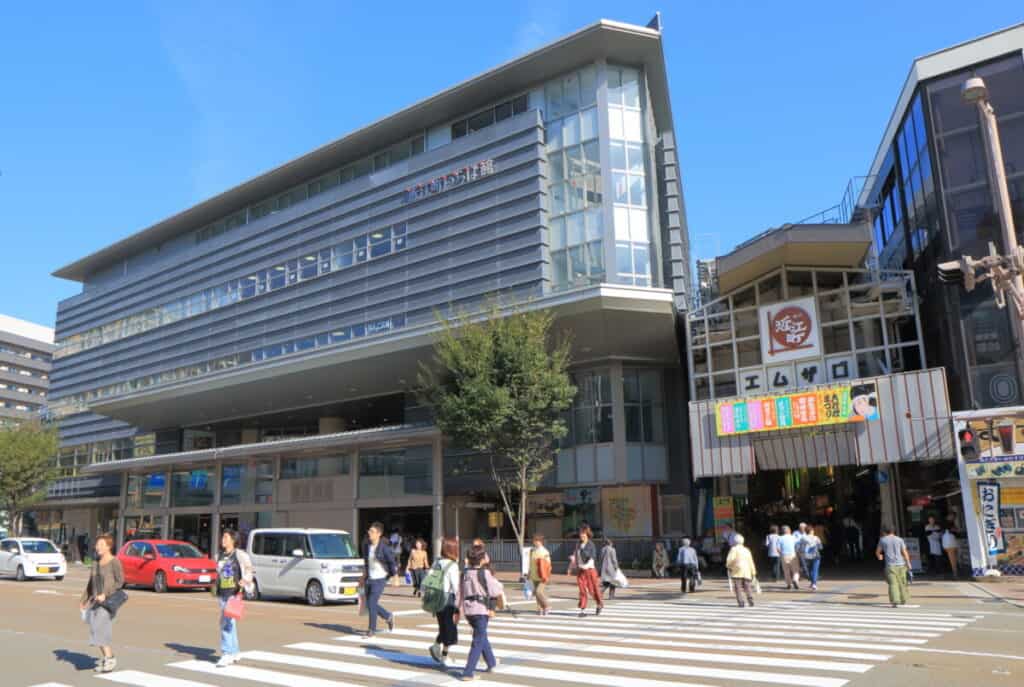
The bright and lively market features fresh seafood and produce, as well as clothing and garment area, garden plants and flowers, and even cookware, all for bargain prices.
There are over 200 vendor tables and stations packed with food items, jewelry, and other products that you can get for a deal if you know how to bargain with the vendors. A little Japanese currency can go a long way if you can speak basic Japanese.
Omicho Market Official Website
The residents usually make up the early morning crowd, but tourists and residents alike will line up during lunchtime for the many restaurants in the Omicho Market that sell delicious rice bowls filled with seafood fresh from Kanazawa.
Nishi Chaya District
Unlike the hustle and bustle of its sister district Higashi Chaya District, Nishi Chaya District is a smaller and more subdued experience.
The Nishi Chaya District is another district that merchants frequented to be entertained by the talented and beautiful geisha who sang songs, danced, and played instruments for the wealthy guests.
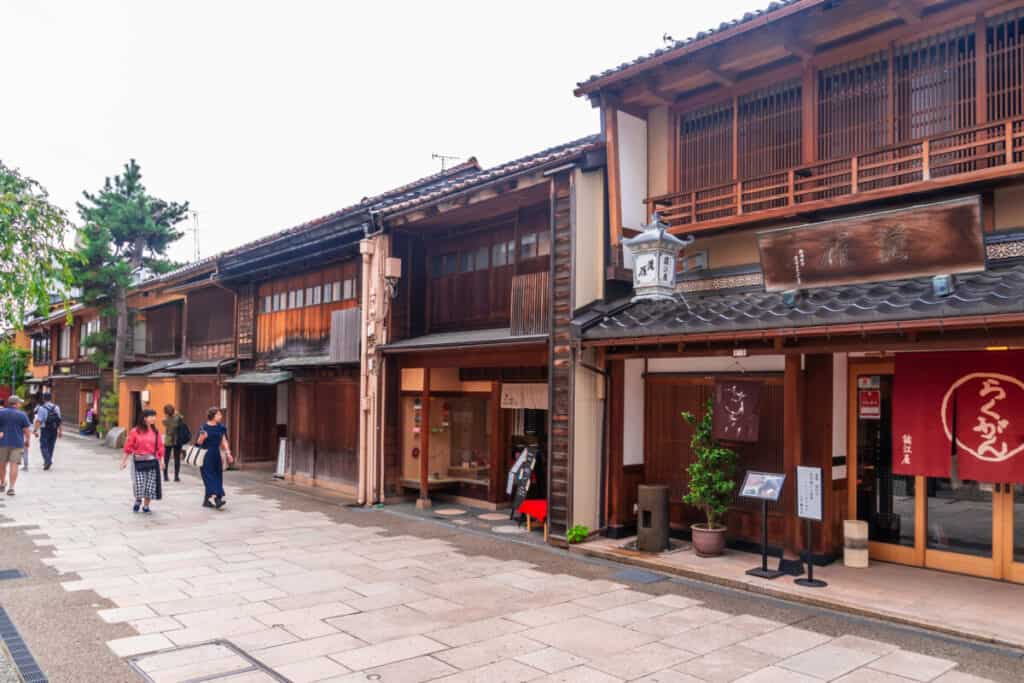
The Nishi Chaya District, or the Western Geisha District, is usually quiet these days and offers a museum featuring the interesting history of the area.
The Nishi Chaya District is located near the Ninjadera, also called the Ninja Temple or the Myoryuji Temple.
The district is well preserved and features daily tours that are conducted in Japanese, giving tourists the opportunity to practice their Japanese speaking and listening skills.
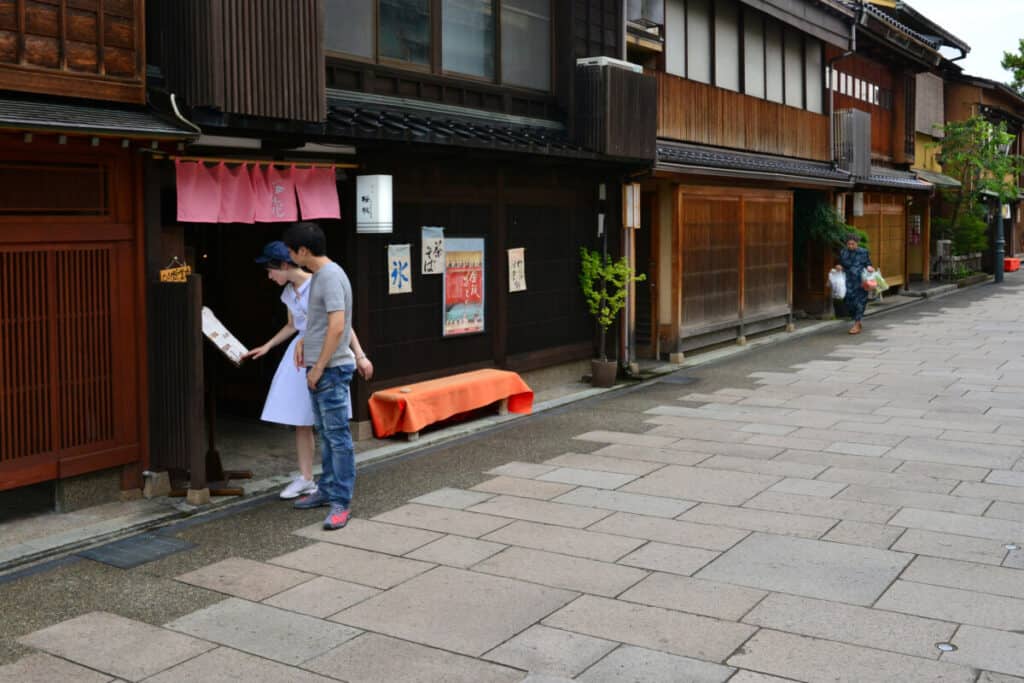
Nishi Chaya District Official Website
Admission for the tours and the museum is free and there are usually no closed days so you can plan to visit anytime during their hours of operation.

